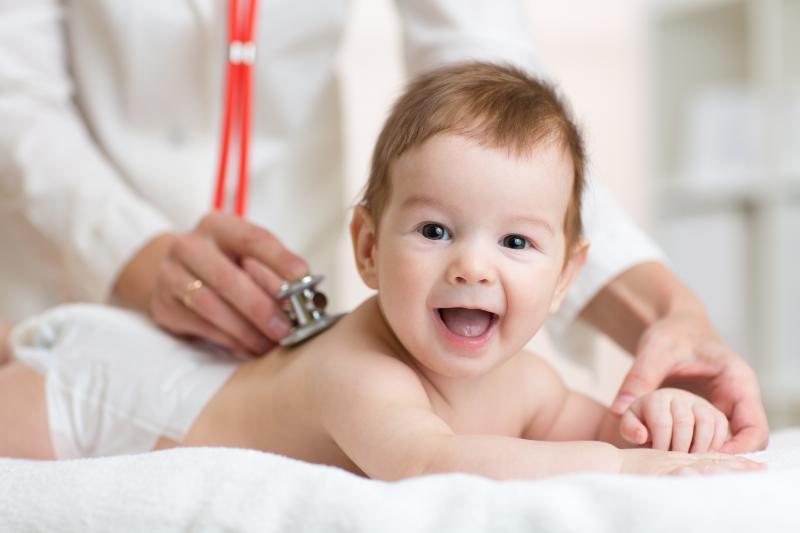Diaper rash is a common skin irritation that typically appears as red and inflamed skin in babies and toddlers who wear diapers. The diaper area in a baby is often warm and moist, making it prone to bacteria growth and irritation. If you notice swelling, redness, or itchy skin in your baby, it may be a case of diaper rash.
Diaper rash usually happens when diapers are not changed frequently or when using new products like wipes, ointments, oils, or detergents. By using simple at-home treatments and techniques, your baby’s skin should recover in a matter of days.
If you notice that symptoms intensify or issues like fever start to appear, it is important to visit your doctor since prescription antibiotics or specialized care may be needed.
Your child may have a diaper rash if you notice the following symptoms:
- Swollen skin in the diaper area, including buttocks, thighs, and genitals
- Itchy and tender skin with sores in the diaper area
- Discomfort and crying during diaper changes
Diaper rash symptoms can usually be treated with over-the-counter medication. However, if your baby’s rash doesn’t improve after a few days with over-the-counter ointments, prescription medication may be needed.
Visit your doctor if you notice:
- Fever
- Severe rash with bleeding, itching, or oozing
- Worsened symptoms
- Discomfort and crying when your baby urinates
- Unusual bowel movements
Diaper rashes are very common in newborn babies. They usually happen due to sitting in a damp diaper for too long, skin infections and conditions, diet changes, or antibiotics.
Leaving damp or soiled diapers on for too long can irritate your baby’s tender skin. They may also be more prone to diaper rash if they constantly experience bowel movements or diarrhea.
Your baby’s skin could also be adversely reacting to new products like:
- Baby wipes or diapers
- Detergent, bleach, or fabric softener
- Lotions, powders, and oils
Untreated bacterial or fungal infections tend to spread to the surrounding skin covered by a diaper. This area is usually warm and moist, making it easy for bacteria and yeast to grow. These rashes often appear within the creases of the skin with red dots scattered around the area.
If your baby has sensitive skin or suffers from skin conditions like eczema or seborrheic dermatitis, they may be more likely to develop a diaper rash.
As babies start to eat solid foods, the content of their stool changes. This increases the likelihood of diaper rash. Antibiotics can contribute to a rash by killing bacteria that keep yeast growth in check and increase the risk of diarrhea.
Diaper rash usually disappears with at-home remedies. If symptoms persist or worsen, it is essential to visit your doctor. They will closely review your baby’s case and advise prescription ointments or medication.
A diaper rash can be treated at home by:
- Keeping the diaper area clean and dry, even at night
- Rinsing your baby’s bottom with warm water after each diaper change
- Gently patting the skin dry or letting it air dry
- Avoiding scrubbing and using talcum powder
- Applying over-the-counter diaper rash creams
- Allowing airflow by letting your baby nap without a diaper and using larger sizes of diaper
- Bathing your baby daily
In cases where diaper rash symptoms don’t disappear with at-home remedies, your doctor may suggest using prescription antifungal or hydrocortisone cream or oral antibiotics in case of infection.
In case a diaper rash comes back again constantly, your doctor may suggest seeing a dermatologist.
Diaper rashes can be prevented by keeping the area clean and dry. Some other tips that can help decrease the risk of diaper rash include:
- Using absorbent gel diapers and changing them often
- Using moist washcloths and letting them air dry after every diaper change
- Discontinuing the use of wipes with alcohol or fragrance and talcum powder
- Applying creams regularly
- Washing your hands thoroughly after changing diapers to prevent spread of bacteria
- Allowing airflow by not tightening a diaper too much
- Giving your baby’s bottom more time without a diaper
Dealing with diaper rash is essential to ensuring your baby's comfort and rapid healing. At Robertson Pediatrics, our team can guide you on best practices for dealing with diaper rash.
We ensure your baby receives the best nurturing care with our newborn care services. We offer same-day visits in our clinic located in the heart of Beverly Hills. For appointments, please call us at 310-659-868 or contact us online.


